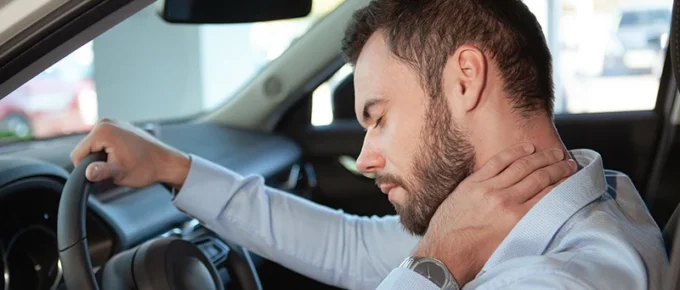
Miami injury attorney discusses the spectrum and shattering severity of car crash injuries.
Car accidents and crashes can result in a wide range of bodily injuries, varying in severity and impact on one’s life.
Some injuries are relatively minor, often not threatening our long-term physical well-being. These may include bruises, minor cuts, or whiplash, typically requiring only a short period of rest and recovery.
However, other injuries sustained in car crashes can be much more severe, affecting victims not just physically but mentally and emotionally as well.
These more severe injuries can lead to long-term or permanent disabilities, significant pain and suffering, and substantial medical expenses.
Some of the most catastrophic car crashes typically involve multiple vehicles and often result from extreme weather conditions, such as fog or ice, or the involvement of large commercial vehicles like buses or trucks. In many cases, severe crashes that lead victims or their families to seek help from a catastrophic injury attorney usually stem from negligent or reckless behavior, resulting in head-on or T-bone collisions.
As attorneys specializing in Miami car accident cases, we understand the intricacies of these injuries and their profound impact on victims’ lives. Our legal team will guide you through the personal injury claim process, carefully evaluating your case and explaining the spectrum of car crash injuries you could be facing, from minor whiplash to life-altering spinal cord injuries.
We’ll also break down the potential financial and emotional consequences of these injuries, ensuring you’re fully informed and empowered to make the best decisions for your future.
Understanding the spectrum of injury severity in a car crash
Unfortunately, car crashes are common on today’s roads and can lead to a wide range of injuries. This spectrum of injuries varies significantly in severity and impact, affecting victims in diverse ways.
The injury severity influences the immediate medical response and guides the legal approach in seeking compensation and justice.
Minor injuries: The starting point
At the one end of the spectrum, we have minor injuries. These often include bruises, minor lacerations, minor eye injuries, and whiplash. While uncomfortable and potentially painful, such injuries generally do not lead to long-term health issues.
Medical treatment for these injuries is usually straightforward, involving rest, pain management, and possibly minor medical interventions.
Remember, consulting an attorney after a minor car accident is a wise decision. The full extent of injuries or damages may not be immediately apparent. Seeking early legal advice can be instrumental in securing fair compensation and avoiding future legal complications.
Moderate injuries: Increased complexity
Moving along the spectrum, we encounter moderate injuries. These can include more severe lacerations, broken bones (such as fractures in the arms or legs), and significant soft tissue injuries.
Moderate injuries typically require more extensive medical treatment, which may involve surgery and prolonged physical therapy. The recovery period can be extended, and there may be a temporary impact on the victim’s ability to work and perform daily activities.
Severe injuries: Long-term impacts
On the more serious end of the spectrum are severe injuries. These include traumatic brain injuries (TBIs), spinal cord injuries, amputations, serious internal injuries, and severe burns.
Severe injuries often have lasting impacts, potentially leading to permanent disability, chronic pain, and significant changes in lifestyle and ability to work.
The medical treatment for these injuries is complex and lengthy, often involving multiple surgeries, long-term rehabilitation, and ongoing medical care.
Psychological and emotional trauma
It’s also important to acknowledge the psychological and emotional trauma associated with car crashes. Trauma from car accidents can range from anxiety and stress to more severe conditions like PTSD.
Psychological injuries, while not always visible, can be just as debilitating as physical injuries and require professional and medical treatment and support.
A list of car crash injuries from minor to major
In understanding the full scope of potential injuries from car accidents, having a clear view of the range, from minor to severe, is helpful.
Below is a list of common car crash injuries, organized to give you a quick reference from the least to the most severe:
- Minor bruises and contusions
- Whiplash
- Lacerations
- Minor burns
- Soft tissue injuries
- Sprains and strains
- Concussions
- Broken bones (minor)
- Facial injuries
- Chest injuries
- Back injuries
- Broken bones (major)
- Internal bleeding
- Knee trauma
- Cervical dislocation and disc injuries
- Severe burns
- Spinal cord injuries (partial paralysis)
- Traumatic brain injuries (TBIs)
- Spinal cord injuries (complete paralysis)
- Fatal injuries
This list encapsulates the varying degrees of injuries that can result from car accidents, underlining the importance of taking every incident seriously, regardless of its initial appearance.
Whether you face minor bruises or more severe injuries, understanding your legal rights and options is crucial for a proper recovery and fair compensation.
Word of caution: The deceptive nature of car accident injuries
Not all serious injuries are immediately apparent. Some injuries, especially internal ones, may initially seem minor but can quickly escalate into severe health problems.
This is particularly true with internal bleeding, concussions, or spinal injuries, where symptoms might not be noticeable right away.
Always seek medical attention
After any car accident, no matter how minor it may seem, it’s essential to seek medical attention. A thorough check-up can reveal injuries that are not immediately visible or symptomatic. This step is crucial for your health and safety and is critical to legal claims.
Keep medical records and receipts
Maintaining detailed records of your medical visits, treatments, and expenses is also crucial. These documents serve as vital evidence should you need to pursue a legal compensation claim. They provide a clear, documented link between the accident and your injuries, which is essential in proving the extent and impact of your injuries.
File a police report
A police report is an official incident record and can be invaluable in legal proceedings. The report includes details such as the accident’s date, time, and location, witness statements, and the officer’s observations, all crucial pieces of evidence.
Filing a police report also ensures a formal record of the incident, which can be critical if symptoms of an injury appear or worsen after the accident.
From Enjuris:
How can I get a police report online after a car accident?
If you’re in a car accident, the responding officer will write a police report. Learn how to get a copy of the report and use it to support your case.
Understand your legal options and take action
If you’ve been in a car accident, it’s important to discuss filing a car accident claim with our Miami car accident attorney.
Our attorney understands the complexities of car accident injuries and their life-altering impacts. With a steadfast commitment to providing personalized attention and a proven track record of successful verdicts and settlements, Mike Redondo and his team stand ready to advocate for the full compensation you are entitled to.
We don’t just understand the complexities of car crash injuries – we fight tirelessly to ensure you receive the maximum compensation you deserve for damages (economic, non-economic, and punitive). From medical bills and lost wages to pain and suffering, we’ll leave no stone unturned in pursuing the fullest possible recovery for your circumstances.
Take the first step towards healing and financial security by scheduling your free consultation today. Simply fill out the form below and get connected with our legal team.


